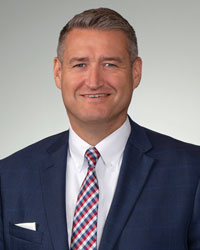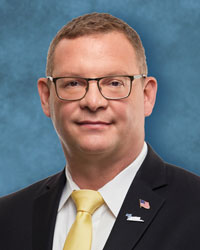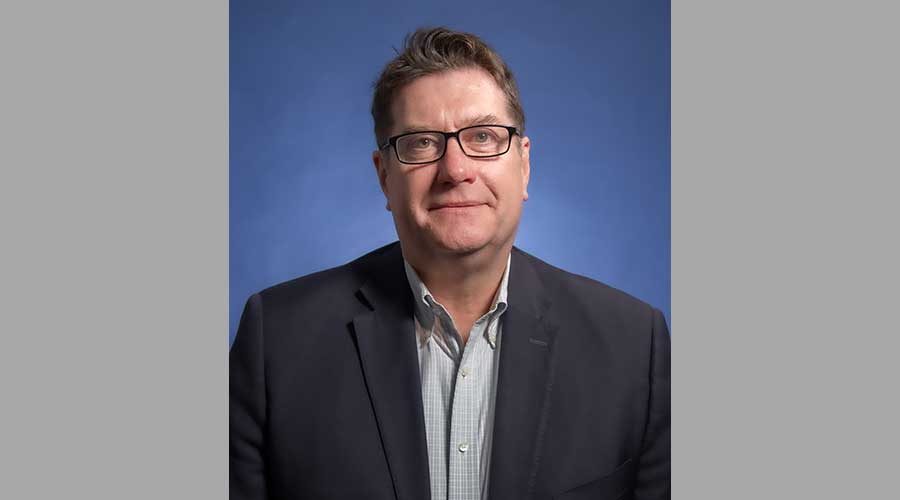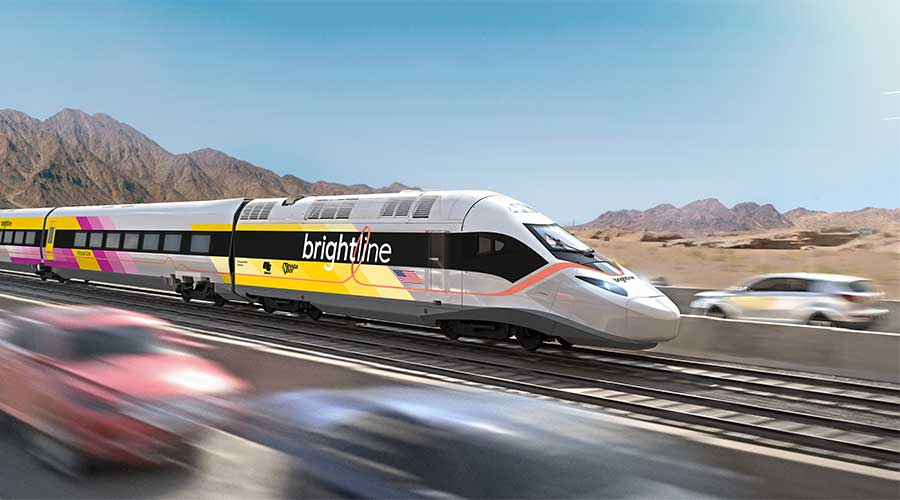Stay updated on news, articles and information for the rail industry
December 2022
Rail News: Passenger Rail
Transit outlook: Improved infrastructure, higher ridership counts in the cards

Compiled by Grace Renderman, Associate Editor
Since the COVID-19 pandemic severely impacted North American transit-rail ridership due to line shutdowns and a lack of demand, transit agencies have been working to regain passenger counts amid changing travel and trip patterns.
Agency leaders also have been trying to overcome the blows that were inflicted on their systems’ fare revenue, staffing and funding for both capital and operational expenses. They continue to seek alternative ways to bring in cash, workers and riders to get back up and running at a normal pace.
Nearly all transit agencies in the United States and Canada are experiencing worker shortages, many of which are so debilitating that they’ve affected the agencies’ abilities to provide regular service, according to a recent study from the American Public Transportation Association. The shift to remote working also had a major impact on local governments’ transportation budgets, requiring them to adapt and reallocate funding across their transit systems, according to a study of California transit agencies from the Mineta Transportation Institute.
Overall, the past few years have been rough for riders and transit operators alike. But there’s still plenty of things to be optimistic about, many agency leaders believe.
For example, the first waves of funding from the $1.2 trillion infrastructure bill will help plug some gaps and resuscitate critical projects, although inflation has caused costs to skyrocket. In addition, U.S. transit ridership in September had reached 70% of pre-pandemic levels — according to APTA figures — showing more passengers are returning to or discovering the benefits of transit rail.
Progressive Railroading recently reached out to transit agency executives in the United States and Canada to gauge their expectations on infrastructure funding and planning and ridership growth for the coming year. The following comments were received via email from David Dech, executive director of the South Florida Regional Transportation Authority (SFRTA), which operates Tri-Rail; Jim Derwinski, CEO and executive director of Metra in Chicago; Collie Greenwood, general manager and CEO of the Metropolitan Atlanta Rapid Transit Authority (MARTA); Debra Johnson, GM and CEO of the Regional Transportation District of Denver (RTD); Jessica Mefford-Miller, CEO of Valley Metro in Phoenix; Steve Poftak, GM of the Massachusetts Bay Transportation Authority (MBTA); Julie Timm, CEO of Sound Transit in Seattle; Phil Verster, president and CEO of Metrolinx in Toronto; and Stephanie Wiggins, CEO of the Los Angeles County Metropolitan Transportation Authority (L.A. Metro).
What funding are you anticipating to receive from the federal infrastructure bill? How will you use those funds to advance capital projects or maintain existing assets?

DECH: We are currently pursuing all avenues that can help continue to build our rail infrastructure to ensure we are equipped for the continued population growth expected in South Florida. Among some of the projects we can immediately pursue are the replacement of rail rolling stock, as we still have some of the original equipment since Tri-Rail started in 1989. The SFRTA governing board is motivated to pursue transit-oriented developments on the South Florida Rail Corridor, which is an opportunity we are tracking to plan for projects that will be suitable to the growth expected in the region. Our team actively targets formula grants to help both our capital projects and operating assistance to support the agency’s vision for a sustainable and viable transportation system.
DERWINSKI: Metra has a large backlog of capital and state-of-good-repair projects that the Infrastructure Investment and Jobs Act (IIJA) funds will help us address. These include investments in new rail cars to replace and modernize our aging fleet, reconstructing stations on multiple rail lines — including 13 stations in design or construction on our Metra Electric Line — and modernizing our fare collection process with new ticket vending machines, improved train tracking and real-time messaging signs.

GREENWOOD: I had the honor of testifying before the U.S. Senate Banking Committee this March to discuss the positive impact the IIJA will have on MARTA and the jurisdictions we serve. MARTA will receive approximately 30% more in formula funds annually, which will help accelerate our state of good repair program. Major initiatives include the replacement of our entire rail-car fleet, rehabilitation of our 38 rail stations (including the installation of “smart” restrooms, and elevator and escalator upgrades) and track replacement.
JOHNSON: The IIJA provided a roughly 30% increase in formula funding through the Federal Transit Administration that will be used to cover operating maintenance. During the pandemic, RTD deferred some maintenance, so the increased funding will help to ensure that the system is meeting its state-of-good-repair needs.

MEFFORD-MILLER: For capital projects currently under construction, there are advances on apportionments allocated to Valley Metro’s light-rail expansion projects, including $232 million for the South Central Extension/Downtown Hub and $58 million for the Northwest Extension Phase II. This allows us to draw down grant money in fiscal-year 2023, which was originally planned for FY24 and FY25. We’re able to leverage the economic development potential of our expanding light-rail extension through programs like the FTA’s TOD Planning Projects program. This year, Phoenix will receive $1 million for TOD planning along the South Central corridor.
POFTAK: Using the state-of-good-repair program funds, we’re making advancements in our plans to maintain, replace and rehabilitate our infrastructure. This includes a wide variety of projects, from design and construction projects upgrading bridges that carry commuter-rail trains and subway cars, to the design and construction of elevator improvements within the subway system, to modernizing the Green Line’s Symphony Station in order to make it fully accessible, to upgrading our two-way radio systems. It also includes our Power Systems Resiliency Program, which will replace power cable duct banks that support the subway system, and Phase 3 of our Systemwide Asset Management Program, which aims to completely update our asset inventory for the National Transit Database and transit asset management plan.

TIMM: The IIJA has expanded Sound Transit’s federal partnerships and assisted with the agency’s continued progress in implementing the voter-approved regional system, while also advancing the nation’s climate, mobility and equity priorities. In FY22, the robust Capital Investment Grant (CIG) funding benefited Sound Transit’s existing two light-rail full funding grant agreements (FFGA), Lynnwood Link and Federal Way Link. Congress continues to hash out a spending package for FY23, but if the advance appropriations from the IIJA and recommended FFGA funding from the FTA remain intact, the CIG funding levels would appropriate $318 million for the Federal Way Link Extension, which in a single year would complete the FTA’s multi-year FFGA for that project, three years sooner than previously committed.

WIGGINS: We’ve done extensive planning work and secured environmental approvals for dozens of badly needed capital improvement projects that are waiting their turn for funding. The IIJA represents a fantastic opportunity for L.A. Metro to accelerate those projects, especially as we prepare to host the Olympic and Paralympic Games in 2028. We are already in the construction and pre-construction phases for more than two-dozen projects we’ll need for the Games, and we’ve identified 50 more mostly smaller projects that will ensure we deliver the mobility solutions needed for the success of the Games.
With regards to the pandemic, the transit industry is certainly in a better position now than it was a year ago. So, how do you expect to continue rebuilding your ridership considering COVID’s impact?
DECH: We are pursuing expansion opportunities with our partners at the Florida East Coast Railway and Brightline, through which we hope to have Tri-Rail service directly run into downtown Miami very soon. That will be the one of the most impactful enhancements in our service. This, along with the refurbishment of our current equipment that is already in motion, will add several points of improvement that our passengers will begin to see in a matter of months, and we expect will attract a whole new population of riders.

DERWINSKI: With fares, we started to offer new day passes and deeply discounted flat-rate monthly passes during the pandemic and in its aftermath, and in 2023 we will continue to offer all those options. The idea is to create fare products that are attractive to occasional users. With schedules, we have been trying to step away from pre-pandemic schedules that prioritized peak rush-hour service in favor of a more balanced approach that spreads out the service to offer better off-peak options.
GREENWOOD: Our new customer experience office works to improve the ride by providing more accurate real-time service information, partnering with ride-hailing services to fill in service gaps during planned and unplanned interruptions, and overseeing a Riders’ Advisory Council that provides recommendations to enhance the customer experience. MARTA is also proud to announce we’ve extended our partnership with HOPE Atlanta to humanely address homelessness on the system by providing support and resources to unsheltered individuals.

JOHNSON: While the agency continues to see modest gains in ridership, changes in transit trip patterns suggest significant adjustments to the system are needed to accommodate new travel demands and to maintain productive, cost-effective service offerings. RTD has adopted the Reimagine RTD System Optimization Plan, which modifies the existing service delivery model, focusing more resources on higher-frequency, all-day services and reallocating resources from less productive services to create a more robust transit network.
MEFFORD-MILLER: Valley Metro is continuing to operate at nearly pre-pandemic levels, and throughout the pandemic, we’ve maintained more than half of our customer base. We’re focused on delivering equitable service and ensuring those core customers continue to have access to reliable, frequent, safe service. As we emerge from the pandemic, we’re taking a fresh look at our services and making changes that will help us sustain and grow ridership, including adjusting our routes and schedules to new travel patterns; shifting our scarce resources, including our workforce, to where they’re needed most; introducing new types of mobility; and making transit easier to use, faster and more convenient.

POFTAK: With the availability of remote work and work-from-home opportunities, we’ve shifted our commuter rail schedules to a more regional rail-style of clockface scheduling with trains making stops at more consistent times throughout the day, which is a big change from our pre-COVID focus on the Monday-to-Friday morning and evening rush-hour periods. We believe ridership recovery will continue to be largely dependent on these work-from-home patterns, and understanding these travel patterns will be critical in developing creative transit options that best meet riders’ needs and promote ridership growth.
TIMM: Link light-rail ridership has been steadily increasing in 2022, recording an all-time high of 2.3 million riders in September. Ridership patterns have also changed compared to before COVID, with higher midday and weekend ridership making up for relatively lower levels of traditional 9-to-5 commuting. Ridership also is rebounding, albeit much more slowly, on Sounder commuter trains.

VERSTER: Ridership, by number of unique riders, has recovered for GO Transit to pre-pandemic levels. However, the number of trips each unique rider takes is smaller on a weekly basis when compared to pre-pandemic levels. It is also very evident that our communities are adjusting their travel patterns. We now see increasing demand for events, weekend breaks and just getting out for an experience, while journeys for conventional commuting have declined in the work-from-home era we are in now.
WIGGINS: L.A. Metro has a goal of restoring its ridership to pre-pandemic levels by the end of June 2023. In addition to all our customer experience improvements, we are also taking action to target riders that are growth segments for the transit industry. Young people want to ride transit, so we partnered with the largest school districts and community colleges in our region to launch our GoPass pilot program, which provides free rides to K-12 and community college students. Most of our riders have low incomes, so we enhanced our fare discounts for low-income riders. And before the pandemic, women were an increasing percentage of transit ridership, so we’re implementing a gender action plan to enable us to restore and grow our ridership through women and families.
Email questions or comments to grace.renderman@tradepress.com.
Keywords
Browse articles on transit outlook 2023 transit-rail ridership American Public Transportation Association Mineta Transportation Institute David Dech SFRTA Jim Derwinski Metra Collie Greenwood MARTA Debra Johnson RTD Denver Jessica Mefford-Miller Valley Metro Steve Poftak MBTA Julie Timm Sound Transit Phil Verster Metrolinx Stephanie Wiggins L.A. MetroContact Progressive Railroading editorial staff.


 LRW Honors Amtrak’s Acheson As Railway Woman Of The Year
LRW Honors Amtrak’s Acheson As Railway Woman Of The Year
 From Editor-In-Chief Foran: Of Gender Equity And Inclusion
From Editor-In-Chief Foran: Of Gender Equity And Inclusion
 Spotlight On Some Of Today’s Rail Safety Products
Spotlight On Some Of Today’s Rail Safety Products
 Women of Influence in Rail eBook
Women of Influence in Rail eBook
 railPrime
railPrime








